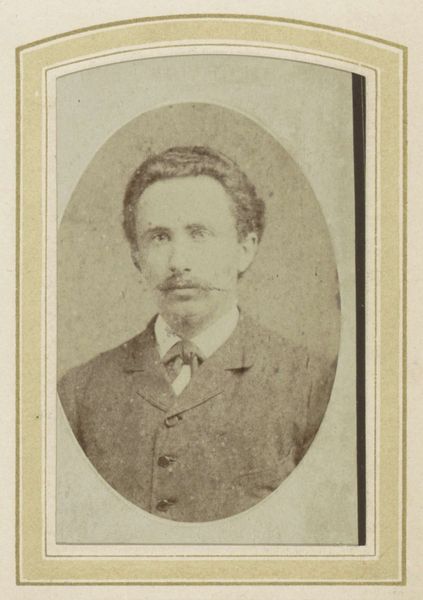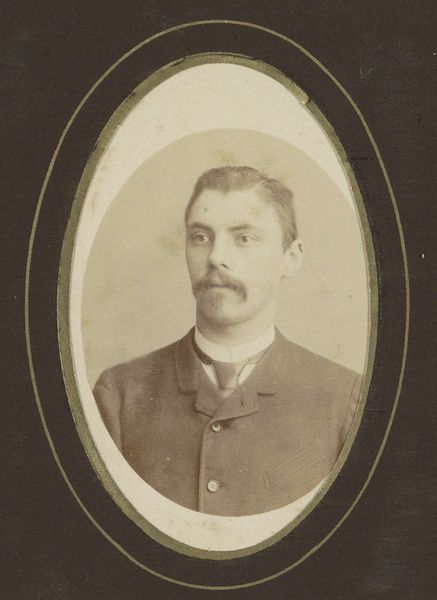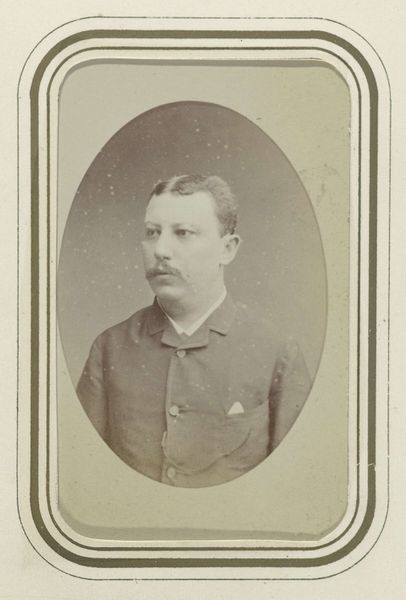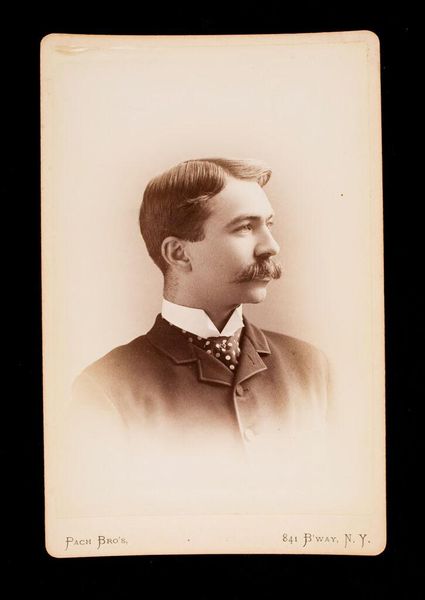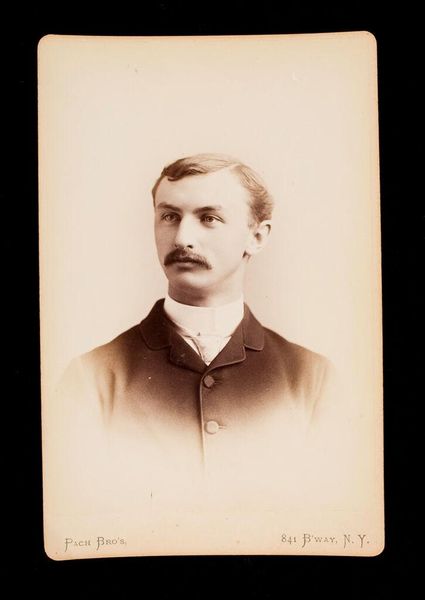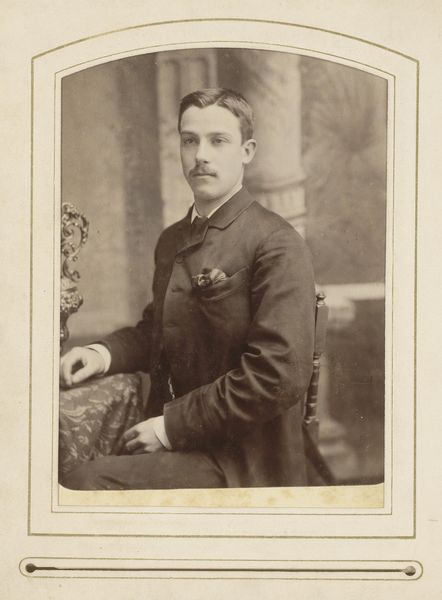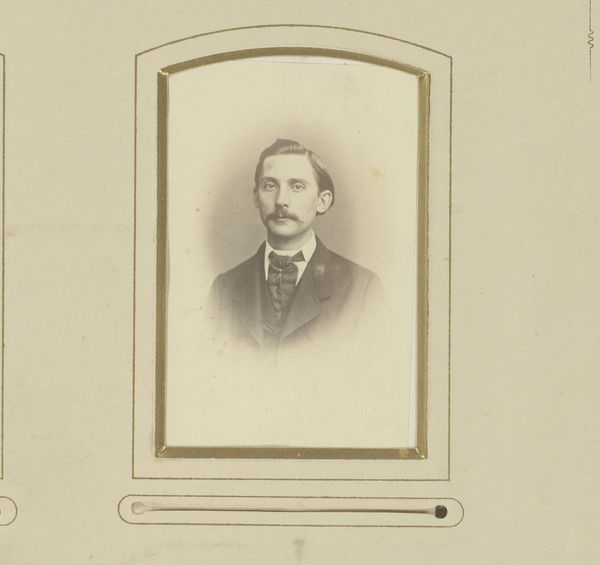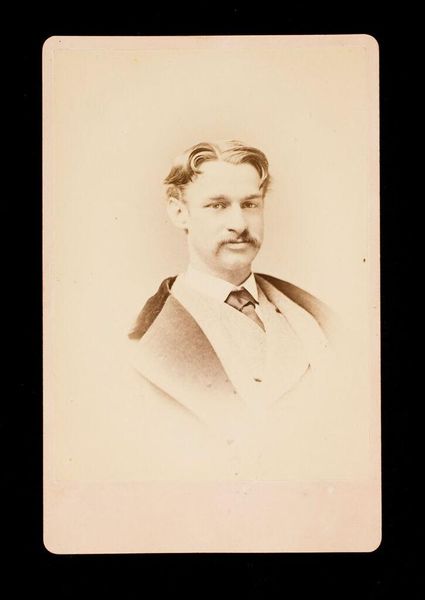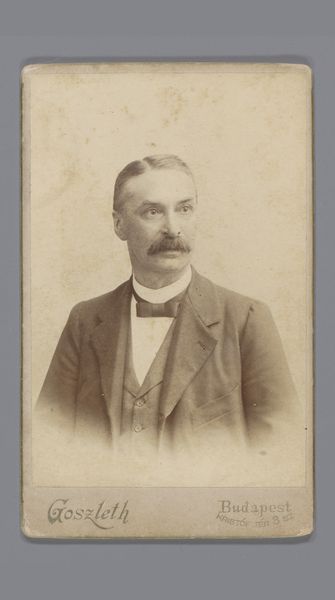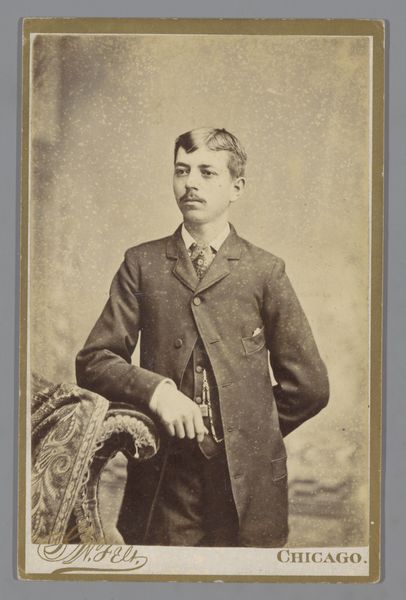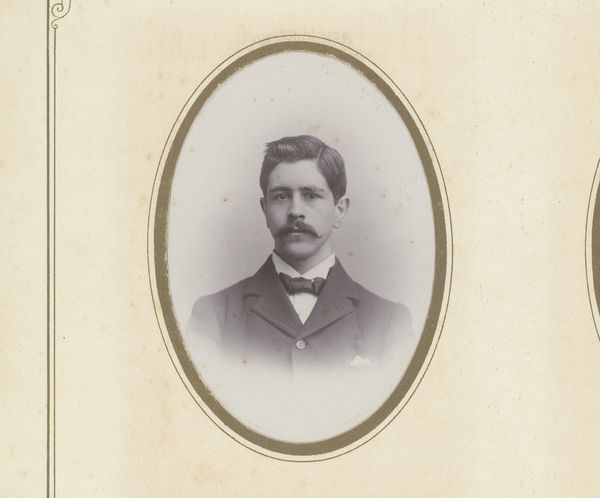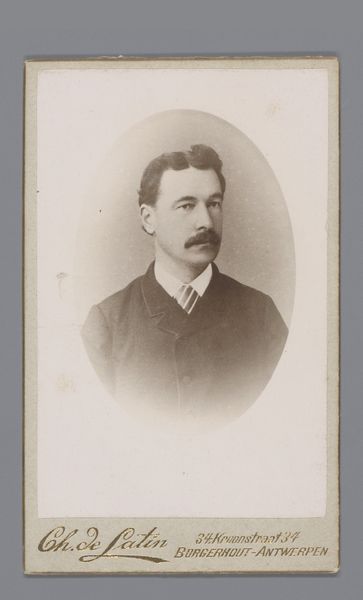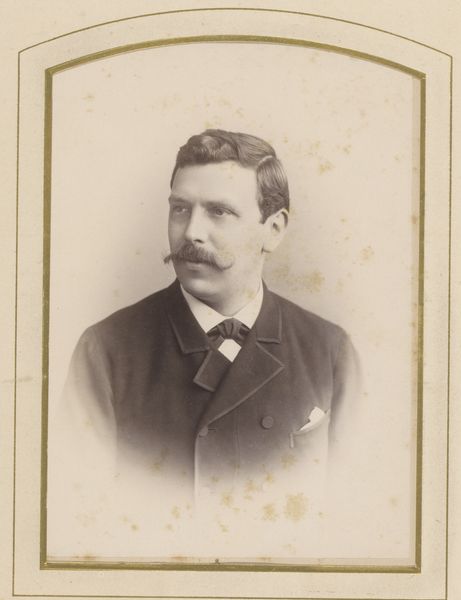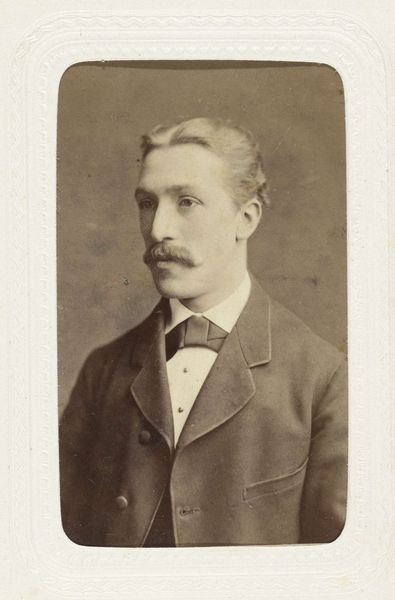
photography, gelatin-silver-print
#
portrait
#
photography
#
historical photography
#
gelatin-silver-print
#
realism
Dimensions: height 88 mm, width 53 mm
Copyright: Rijks Museum: Open Domain
Editor: So, this is a gelatin-silver print simply titled "Mansportret," created sometime between 1880 and 1886 by an anonymous artist. It's incredibly formal. It really gives me a sense of the kind of controlled representation that was considered important then. What do you see in this portrait in terms of its historical context? Curator: This image provides an intriguing glimpse into the democratisation of portraiture through photography. Consider its function; how was the sitter, how was he likely situated within the social and economic fabric? Photography provided a burgeoning middle class with opportunities for image making and circulation that once only elite groups could mobilize and afford. What does his suit, his posture tell us about him, about what this portrait was for? Editor: Well, he seems to be dressed quite well, not extravagantly, but respectfully, and he has this striking chain for his pocket watch which feels meaningful in its formality. The photographer’s decision to show this item must say something about the value of professional settings or aspiration to rise. I wonder about its use at that time and what this means now. Curator: Exactly. These visual cues are powerful communicators of status and aspirations. It is vital to recognise, too, how such images contributed to shaping cultural ideals and even how identities were performed in the late 19th century. The relatively controlled nature of photographic sittings provided people with ways to reinforce their chosen place in social systems. It helped further certain public personas at a time when societal norms were being rapidly redefined due to industrialisation. Do you agree? Editor: Yes, I see what you mean about how these portraits can shape perceptions of both the sitter and their place in society, and they offer some subtle insight into rapidly changing social and professional spaces, which is quite fascinating. Thanks for that! Curator: Of course! Thinking about such images as historical artifacts can allow us to analyse the public role that art and these types of portrait played.
Comments
No comments
Be the first to comment and join the conversation on the ultimate creative platform.
